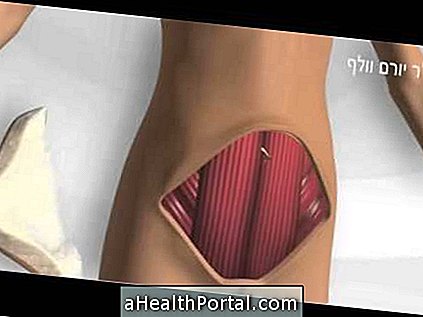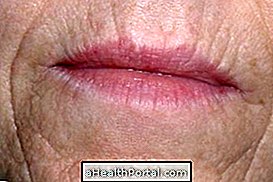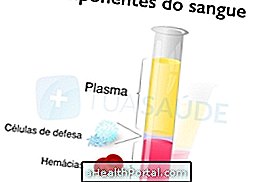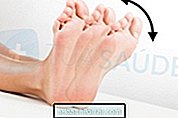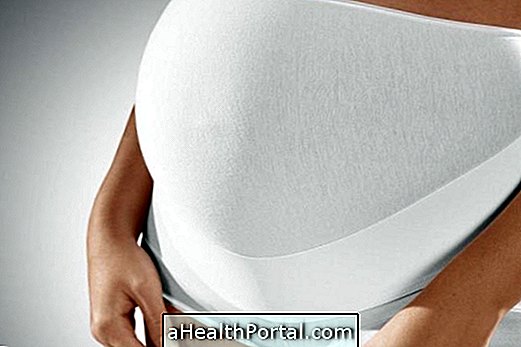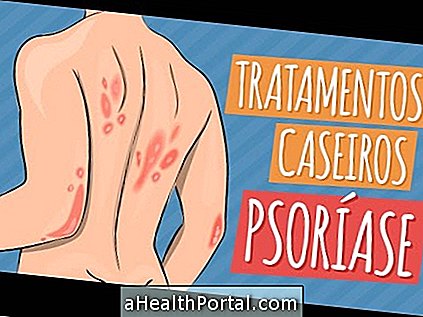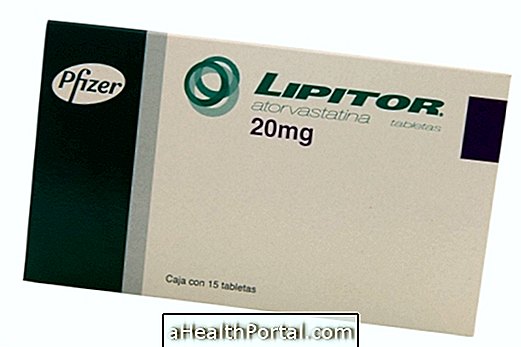Liposuction is a plastic surgery, and as every surgery also presents some risks, such as bruising, infection and even, perforation of organs. However, these are very rare complications that usually do not happen when the surgery is done in a reliable clinic and with an experienced surgeon.
In addition, when a small amount of fat is aspirated the risks are even reduced, because the chance of complications increases when the surgery is high or when a lot of fat is aspirated, as in the abdominal region, for example.
In any case, to avoid these complications, it is advised to do the liposuction with a well trained and experienced professional, in addition to complying with all the doctor's indications after the surgery. See the most important postoperative care of liposuction.

1. Bruising
Hematomas are one of the most common complications of this type of surgery and are characterized by the appearance of purple spots on the skin. Although they are unorthodox, hematoms are not serious and happen as a natural response of the body to the injuries caused by fat cell surgery.
In most cases, bruising begins to disappear, naturally, about 1 week after liposuction, but there are some precautions that help to speed recovery, such as drinking a hot compress, avoiding intense activities and applying an ointment with anticoagulant effect, such as Hirudoid or Arnica ointment, for example. See other important care.
2. Seroma
The seroma consists of the accumulation of fluid under the skin, usually in the places where the fat was removed. In these cases, it is possible to feel a swelling in the region and, pain and release of a clear liquid by the scars.
To avoid the onset of this complication it is necessary to use the strap indicated by the doctor after the surgery, to make sessions of manual lymphatic drainage and to avoid to carry out intense physical activities or to catch in objects with more than 2 Kg, for example.
Flaccidity
This complication is more frequent in people who remove a large amount of fat, which usually happens in the abdominal region, flanks or thighs, for example. In these situations, the skin, which was very stretched due to the presence of excess fat, becomes more flaccid after liposuction, so it may be necessary to have another surgery to remove excess skin.
In milder cases, other less invasive treatments, such as mesotherapy or radiofrequency, may be used to make the skin less flaccid.
4. Sensitivity change
Although it is rarer, the onset of tingling in the skin may indicate a change in sensitivity caused by minor lesions on the nerves of the aspirated region. These lesions occur due to the passage of the cannula by small superficial nerves.
Generally, no specific treatment is necessary, and the body naturally regenerates the nerves, however, there are cases where the tingling can last for more than 1 year.

5. Infection
Infection is a risk that is present in all types of surgery, since when there is cut of the skin, there is a new entry for viruses and bacteria to reach inside the body. When this happens, symptoms appear at the site of the scar such as swelling, intense redness, pain, foul smell and even the release of pus.
However, infections can be avoided in the vast majority of cases, with the use of antibiotics prescribed by the physician and with appropriate scar care in the clinic or at a health clinic. Here's how to take care of the scar to prevent infection.
6. Thrombosis
This is another of the rarer complications of liposuction, and it occurs when the person is lying down for many days without taking walks in the bedroom or at home. This is because, without the movement of the body, the blood tends to accumulate in the legs, which facilitates the formation of clots that can clog veins and cause deep venous thrombosis.
In addition, because the first 24 hours after liposuction is prohibited from getting out of bed, the doctor may also prescribe heparin injections, which are a type of aticoagulant that helps decrease the risk of clot formation, even if the person can not walk . However, it is advisable to walk as soon as possible.
If symptoms of thrombosis occur during recovery, such as swollen, red, and painful legs, it is very important to go to the emergency room immediately to initiate appropriate treatment and avoid more serious complications such as death of the leg, stroke or infarction, for example .
7. Organ perforation
Drilling is the most serious complication of liposuction, but it is also the rarest. It happens mainly when the surgery is done in unqualified clinics, as it is necessary that the liposuction is poorly executed so that perforation of the organs that are under the layer of fat happens.
However, when this happens, there is a high risk of death, as a serious infection can occur and, therefore, it is necessary to start another surgery quickly to close the perforated site.
Who is at increased risk of complications
The risk of complications is greater in smokers, the chronically ill or the weak immune system. In this way, these individuals should weigh well the advantage and risks of doing cosmetic surgery. Read more in: Who can do liposuction ?.
Currently the liposuction described as the safest is the tumescent liposuction, as it uses a local anesthetic and the amount of fat aspirated is relatively small, reducing the time of surgery.

